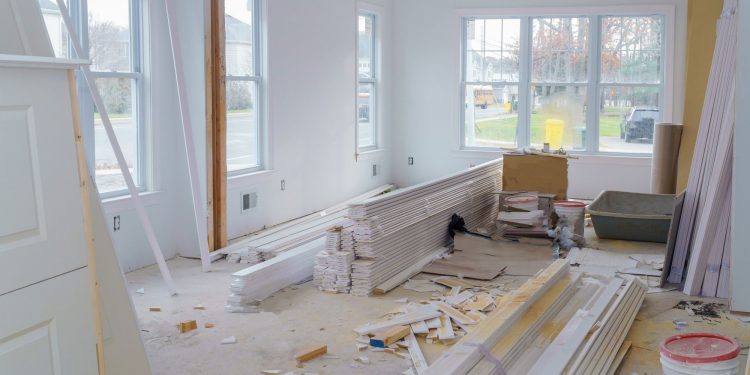Are you ready to embark on a journey back in time, restoring the charm and character of a period property? Whether it’s an elegant Georgian townhouse or a cozy Victorian cottage, renovating these architectural gems requires careful planning and expert guidance. But fear not! In this blog post, we unveil seven essential tips that will transform your period property renovation into a resounding success. From preserving historical features to blending modern comforts seamlessly, join us as we navigate the world of heritage restoration with style and finesse. Get ready to revive the past while creating your dream home for the future – let’s dive in!
Introduction
If you’re planning a period property renovation, there are some essential tips you need to know to ensure a successful outcome. First and foremost, it’s important to have a clear vision for your project. What do you hope to achieve? What is your budget? What are your timeline constraints? Once you have a good understanding of your goals, you can start to put together a plan.
Next, it’s time to find the right team to help you bring your vision to life. This includes everything from architects and designers to builders and tradespeople. Make sure you take the time to find professionals who you can trust and who have experience with period properties.
Be prepared for the unexpected. No matter how well you plan, there will always be unforeseen challenges along the way. The key is to stay flexible and adapt as needed. By following these tips, you’ll be on your way to a successful period property renovation.
Tip 1: Know Your Building’s History
Before embarking on any period property renovation, it is essential that you do your research and know the building’s history inside out. This will not only help you to avoid making any costly mistakes, but also give you a greater appreciation for the property and its unique features.
There are a number of ways to go about researching the history of your building. The first port of call should be the local planning office, where you can request copies of any previous plans or drawings. You can also search online for old images or newspaper articles relating to the property. However, perhaps the most useful source of information will be speaking to your neighbours and other local residents who may have lived in the area for many years and have first-hand knowledge of its history.
By taking the time to learn about your building’s past, you will be able to make more informed decisions about its future and ensure that your renovation project is a success.
Tip 2: Research Planning and Regulations
Before you start your period property renovation, it is important to do your research and plan accordingly. There are a number of things to consider, such as the type of property you have, its history, and any restrictions or regulations that may be in place.
If you are unsure about anything, it is always best to seek professional advice. This will ensure that your renovation project goes smoothly and meets all the necessary requirements.
Tip 3: Utilize Original Features
When undertaking a period property renovation, it is important to utilise original features where possible. Doing so can add character and charm to your finished home, as well as increasing its value. Here are some tips for utilising original features in your renovation:
- Carefully inspect your property for any original features that could be retained or restored. These could include fireplaces, floorboards, wooden beams, etc.
- If possible, retain or restore as many of these original features as you can. This will add authenticity and character to your home.
- If you are unable to retain or restore an original feature, consider replacing it with a sympathetic reproduction. This could still add value to your home while maintaining its period charm.
Tip 4: Incorporate Modern Fixtures and Appliances Sensitively
When incorporating modern fixtures and appliances into a period property, it is important to do so sensitively in order to maintain the character of the home. This can be achieved by ensuring that the new fixtures and appliances are in keeping with the overall style of the property and complement the existing features. For example, if you have a traditional country kitchen, then choosing modern stainless steel appliances which fit well within the space and work alongside the existing cabinetry and fixtures will create a cohesive look. Similarly, if you are updating a period bathroom, then selecting classic-style fixtures and fittings in a contemporary finish will help to achieve this.
Tip 5: Obtain Professional Advice
When embarking on a period property renovation, it is essential to obtain professional advice from an experienced architect or builder. They will be able to advise you on the best way to approach your project, taking into account the specific features of your property. They can also help you navigate the planning process and ensure that your renovation is carried out in compliance with building regulations.
Tip 6: Consider Using Sustainable Materials
When it comes to period property renovation, sustainable materials should always be considered. Not only are they environmentally friendly, but they can also add value to your home.
There are a number of sustainable materials such as aluminium windows and doors that can be used in period property renovation, including:
1. Bamboo: Bamboo is a fast-growing grass that can be used in a variety of ways. It is often used as a sustainable alternative to hardwood floors and can also be used for walls, ceilings, and furniture.
2. Recycled glass: Recycled glass is a great way to add color and texture to your home without harming the environment. It can be used for countertops, backsplashes, and even flooring.
3. Reclaimed wood: Reclaimed wood is an excellent sustainable material that can add character and charm to your home. It can be used for floors, walls, ceilings, furniture, and more.
4. Cork: Cork is another sustainable material that can be used in a variety of ways. It is often used as flooring or wall covering but can also be used for furniture and other decor items.
5. Hemp: Hemp is a versatile plant that can be used for a number of things, including insulation, flooring, and even clothing.
Tip 7: Budget Carefully
When it comes to renovating a period property, budgeting is essential. There are a number of factors to consider when setting a budget for your renovation, including the cost of materials, labour, and any necessary planning and building regulations fees.
It is important to be realistic about the costs associated with your renovation project, as unexpected expenses can quickly add up. Once you have an accurate estimate of the total cost of your project, you can start to look for ways to save money.
One way to save money on your renovation is to source materials yourself. This can be a time-consuming task, but it can also help you to get the best prices on high-quality materials. Another way to save money is to take on some of the work yourself. If you are handy with tools and have some experience in home improvement projects, tackling some of the simpler jobs can help to keep costs down.
No matter what your budget is, careful planning is essential for a successful period property renovation. By taking the time to research your options and compare prices, you can ensure that you stay within budget and end up with a beautiful renovated home that you can enjoy for years to come.
Conclusion
Renovating a period property is no small feat and requires careful planning, research, and preparation. We hope that our tips have provided you with the guidance needed to embark on this exciting project. From understanding building regulations to learning which materials are best suited for period properties, having all of this information can be incredibly helpful in ensuring that your renovation goes as smoothly as possible. With these seven essential tips in hand, you can feel confident starting your next period property renovation!














